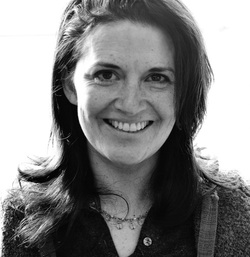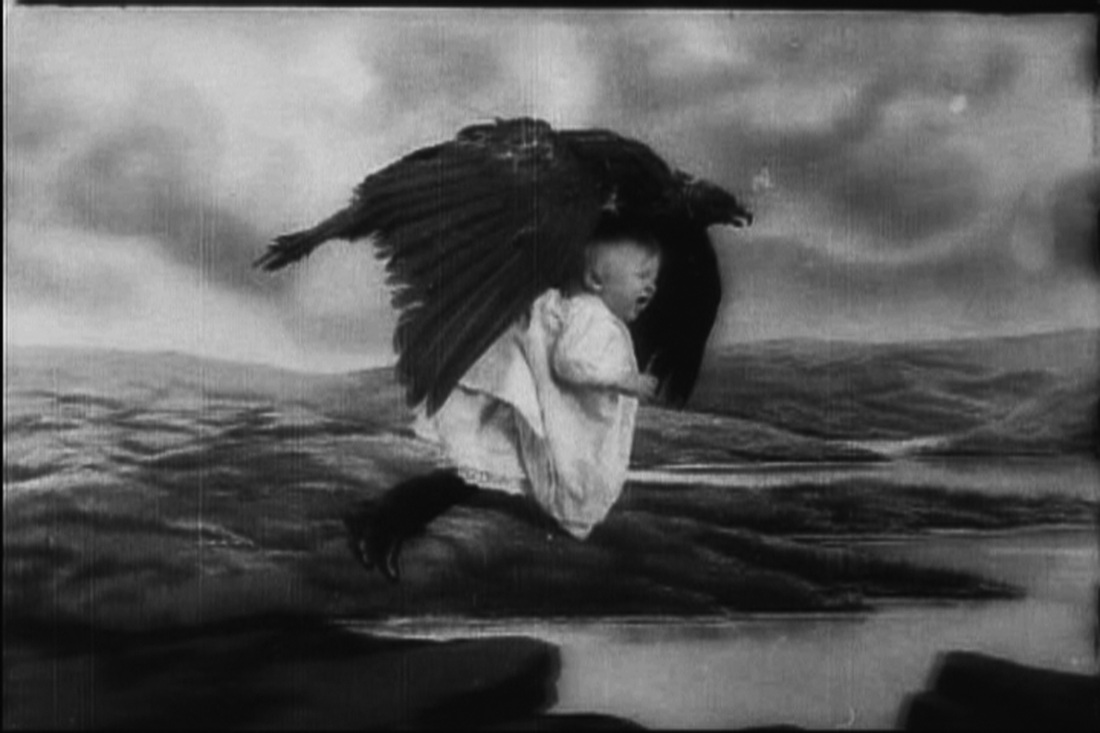RUSTY TALK WITH FRANCISCA DURAN Francisca Duran Francisca Duran FRANCISCA DURAN is a Toronto based filmmaker, experimental media artist and educator. Her media arts work combines digital and analogue formats and explores the intersection points of memory, history, politics and technology. Her work has been exhibited nationally and internationally in numerous film festivals, galleries and group screenings. She holds an MFA in Film Production from York University and a B.A.H. from the Department of Film at Queens University. Born in Santiago Chile in 1967, Francisca came to Canada as a refugee following the 1973 military coup. In addition to her art practice Francisca has worked as a volunteer in the cultural sector since 1991 at organizations such as the Liaison of Independent Filmmakers of Toronto (LIFT) and Cineworks Independent Filmmakers Society in Vancouver. She is currently on the board of directors of Canadian Filmmakers Distribution Centre (CFMDC). Michael Vass: When did you first become interested in filmmaking? What were your first films like? Francisca Duran: I became interested in making films at Queen’s University, which has a film studies program with some production courses interspersed throughout. It was the late 80’s, and I remember looking at a lot of Canadian and American experimental and documentary work, as well as more expressive European and American fiction films. We were encouraged to be very open in our approach to making films—I don’t remember being taught a lot of conventions to follow, or if we were, I did not feel compelled to follow any. In 1991, during my last year at Queens, I made an experimental documentary called Tales From My Childhood on 16mm, which recounts my family’s flight from Chile after the 1973 military coup led by Augusto Pinochet that ousted president Salvador Allende. Visually the film is made up of images of daily life, mundane images of Kingston, Toronto, and a trip I took with my family to Chile, as well as optically printed found footage from the time of the coup. The soundtrack is composed of memory fragments and stories. The visual and structural style references the work of Phillip Hoffman, Ann Marie Fleming, Patricia Gruben, Mike Hoolboom, Barbara Sternberg, Midi Onodera, filmmakers whose work I was drawn to at the time. Tales has a companion piece, Boy, from 1999. It’s an autobiographic piece about the visual poetics of Vancouver and the birth of my first son. The film was shot on 16mm and contains optically printed footage of Vancouver and of Jacob’s birth. I also made a couple of found footage films taken from 1980’s movies directed by women, She Was So Young Back Then and Does This Mean We Are Going Together? My films are sometimes autobiographical documents and they always (attempt to) explore the intersection points between memory, history, and technology and how these relate to the media that represent them. MV: What led you to make a film about Thomas Edison with Mr. Edison's Ear? FD: I set out to make a documentary about some early wax cylinder recordings of aboriginal voices that the ROM had but that belonged to the Six Nations reserve. The ownership and copyright was being negotiated to the point that the ROM was only allowed to display the wax cylinders, not play the audio. It became clear very early on in the research that making this film in the way I wanted to was going to be very difficult because it would involve mediating interests between the ROM, the Reserve and me. While researching the Six Nations cylinders, I investigated the mechanics and history of the early phonograph and became fascinated by the simplicity of that machine. I am always interested in the tactile qualities of media that are thought of as ephemeral, and I want to give a graphical representation to what is perceived as invisible, for instance, light, sound and memory. Edison was actively involved in the development of early sound recording technology. While the history of the phonograph of course extends far beyond Edison, he does hold the first patent. I learned that Edison was (mostly) deaf and that became an important emotional through line for an exploration of the phonograph or for the impetus to capture sound, that Edison wanted to hear so he develops a way to hear (and to try to ruthlessly control the political economy of recorded music and possibly the world). MV: What was the most surprising thing you discovered in your research? FD: I keep coming back to the early paper film prints that the Edison Company made as a way of copyrighting those works. They are beautiful. I love that when these films are restored some of the “originals” are paper. MV: Mr. Edison’s Ear is composed of numerous different formal elements--interviews, archival footage, archival sound recordings, animations, Edison’s diary writings. What was your process like as you assembled all of these elements? FD: I made the film over three years, and I did not work from a script but rather from a series of idea-threads, which would have their own visual or aural treatment, and included animation techniques, layering, optical printing etc. Eventually these components were structured into a finished movie. I think of Mr. Edison’s Ear as a bit of a ghost story. There are over 5 million pieces in the Edison archives. When I was making the film, I would imagine Edison wandering among these archival bits, picking them up, revisiting them, contemplating the bad (and good) he might have caused as he helped to usher North America into modernity. This thought helped me to shape the film. Almost everything in the film has been downloaded from Internet Archives. I spent a lot of time looking at, reading and listening to archival material and also contemplating the technical make-up of the original, and of the archival “copy”. The interviews with theorist, Lisa Gitelman; sound archivist, Robert Hodge; and scientist, Kenneth Norwich were shot on video and then filmed off the screen onto black and white 16mm or de-saturated to give them an archival feel. The animated type sequences are excerpts are from a book I found called The Diary and Sundry Observations of Thomas Alva Edison. Apparently, this book is regarded as being marginal and irrelevant by Edison scholars. Notes on Mr. Edison’s Ear – Proof MV: One aspect of the film that I find interesting and effective is its complex, multilayered tone. On the one hand, it is an essayistic and informative exploration of Edison as a man and inventor. This part of the film is expressed mainly though language—verbal (interviews) and on screen text (Edison’s diary). However, just beneath this surface is a murkier, more disturbing tone, which is not discussed directly for the most part but rather comes through in the atmospheric qualities of certain sounds and images, such as the uncanny insect animations and the eerie quality of some of the archival recordings and film footage. This darker element comes to the forefront in the final scene, which shows the Edison film of the “man killing” elephant being electrocuted. It’s a brutal and disturbing ending, made all the more haunting by the fast that you decline to comment on it directly within the film. Can you talk about achieving this mixture tones, and can you comment on the choice to end the film with the elephant? FC: I needed to convey specific historical, theoretical and technical information, and that is what the interviews do. The diary sections are my attempt to give Edison a kind of poetic or reflective inner life. The original book text was very wordy, and often humorous, more like the writing of Mark Twain. These type sections in the movie have been radically distilled, and I took many liberties when I edited it down. Theorist, Lisa Gitelman, told me The Diary and Sundry Observations of Thomas Alva Edison by Dagobert Runes can’t accurately be called Edison’s diary entries, rather they are a series of written observations made while Edison was on vacation in 1885. Edison didn’t keep a diary, except for the texts in Runes' collection, although apparently he did write many notes in the margins of his books. Much of the “information” within the observations is discounted by historians. Their “marginality” is exactly what drew me to them. The material was very different from other material I was looking at. I love elephants. They have rich and complex social relationships and rituals within their herds, and very long memories. They are also physically large, heavy, and I think they move beautifully. Electrocuting an Elephant (1903) is a documentation of the execution of Topsy the elephant on Coney Island. Topsy was executed because she had killed one of her trainers and seriously injured at least one other. Topsy had been abused during her life in captivity and consequently mistrusted humans. Edison suggested that electrocuting Topsy was an efficient alternative to other methods suggested (such as hanging). Conveniently for Edison, it allowed him to prove the efficacy of his AC distribution system over his competitors (mainly Westinghouse I believe), and this is why the execution was filmed. I wanted the ending to be "open" but I am always asked why I did not contextualize this footage, so perhaps it is too open. Metaphorically it functions as symbolic of the collateral damage of progress, of our entry into the modern condition, of the price of progress, the death of an era. It is also a tribute to Topsy, and to all the creatures and categories of people considered lesser by the people behind power structures, those making choices, decisions and how those decisions affect other beings. The insects and animals represent that marginality that exists and rises to the surface anyway despite dominant discourses and power structures. An obvious analogy would be tiny plans that grow out of cracks in concrete surfaces. In addition to making a film about the emergence of early sound technology, I was interested in exploring what lies behind the desire to control nature, time and space (physical spaces). The mid 1800 to early 1900s was a time of great change, and transformed people's internal maps, the way people conceived of space and time and themselves within time and space. MV: What are you working on now? FD: I am finishing up a one year contract as Education and Outreach Coordinator at LIFT (the Liaison of Independent Filmmakers of Toronto) and working on two projects: Cold Food is an expressive documentary anchored around a book of poems written by my father, Claudio Duran, which was published by poet bp Nichol's press Underwich Editions in the 1980's. The film explores poetic typographic forms, the history of the representation of downtown Toronto, and the limitations of translation. Cold Food is a visual and aural collage consisting of hand-drawn illustrations, type, archival maps, original footage shot on 16mm and HD, archival recordings, sound composition and original interviews. (In post-production) AK47 is the fourth film in a series, “Retrato Oficial”, all based on the legacy of Chile's former dictator Augusto Pinochet. The works are constructed entirely of archival elements including declassified CIA telegrams, found footage audio and images. This component explores the stories that surround the AK47 that was given to Chilean president Salvador Allende by Fidel Castro, and which Allende used to commit suicide on the day of the 1973 military coup. (In development) MR. EDISON'S EAR BY FRANCISCA DURAN |
Rusty Talk
Rusty Talk Editor: Archives
November 2017
Categories
All
|


 RSS Feed
RSS Feed
